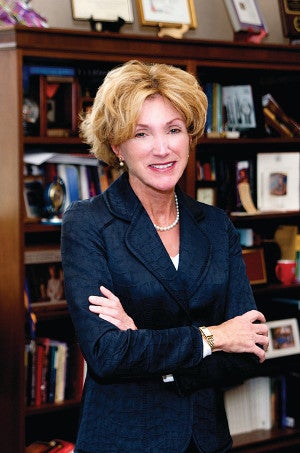MESSAGE From the President
A Smart Investment
Pioneering Work Could Yield Hefty Savings

President Barbara R. Snyder
Many cite Google when people question the value of federal investments in research.
After all, its two founders were graduate students relying on National Science Foundation support when working on the project that led to what is now a roughly $550 billion company.
But we don’t have to look to Silicon Valley for proof that such spending provides rich returns. Examples abound, including right here on our campus. Consider Anant Madabhushi, PhD, the F. Alex Nason Professor II in biomedical engineering, whom we profile in this issue of the magazine.
A pioneer of computational imaging, Madabhushi leads a team that last year won a five-year, $3.3 million National Institutes of Health (NIH) award to advance an approach that uses quantitative analysis to evaluate the aggressiveness of the most common type of breast cancer, estrogen receptor positive (ER+).
While doctors typically recommend a combination of chemotherapy and hormone therapy for patients with ER+ cancer, research shows that the chemotherapy is ineffective for about half of them. The challenge for physicians is that, until recently, scientists could not tell which half would benefit—and which should be spared the ravages of chemotherapy. The new validated test now on the market involves laboratory assessment of a sample of cancerous tissue. While it is an extraordinary breakthrough, each test costs about $4,000. Given that about 185,000 women in the U.S. are diagnosed with ER+ cancer each year, it would take $740 million to assess them all.
Fortunately, Madabhushi and his team replaced testing actual tumor tissue for technological analysis of its image. The costs to manufacture his test? As low as $4 each. Of course, that figure does not include all of the expenses involved in bringing it to market—including multiple rounds of clinical trials required for federal approvals. It’s difficult to predict the exact increase in cost of that process, but Madabhushi has estimated a price of $200 each. That amount would put the cost of covering all of last year’s cases at $37 million, for a potential annual savings of $703 million. Over five years? $3.5 billion.
Not every federal grant contributes to such exceptional results. Still, with just 16 of every 100 NIH applications receiving any funding, it’s difficult to argue that the agency spreads money indiscriminately. Plus, each dollar of 2016 NIH awards yielded an additional $1.60 in economic activity (i.e., jobs, purchases of materials and equipment, etc.)—before the research itself yielded savings and/or new revenues.
Even on purely financial terms, then, federal research spending represents a smart investment for the entire country. Add in other factors—like sparing thousands of women the suffering of needless chemotherapy—and it becomes even more appealing.

Barbara R. Snyder
President





